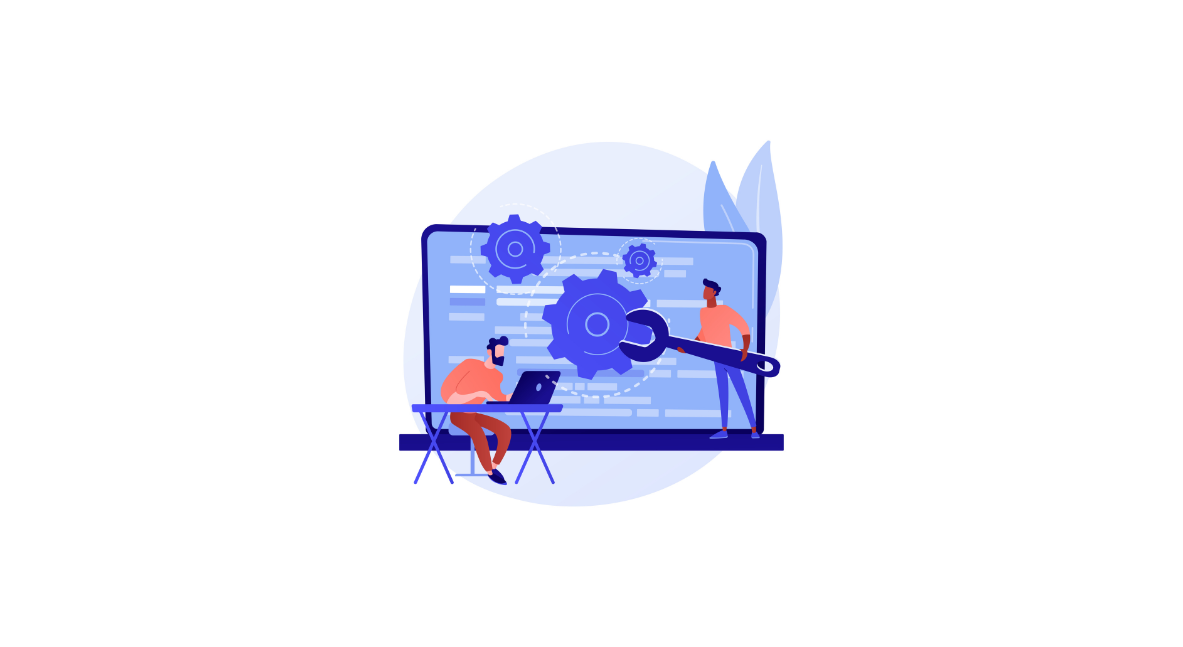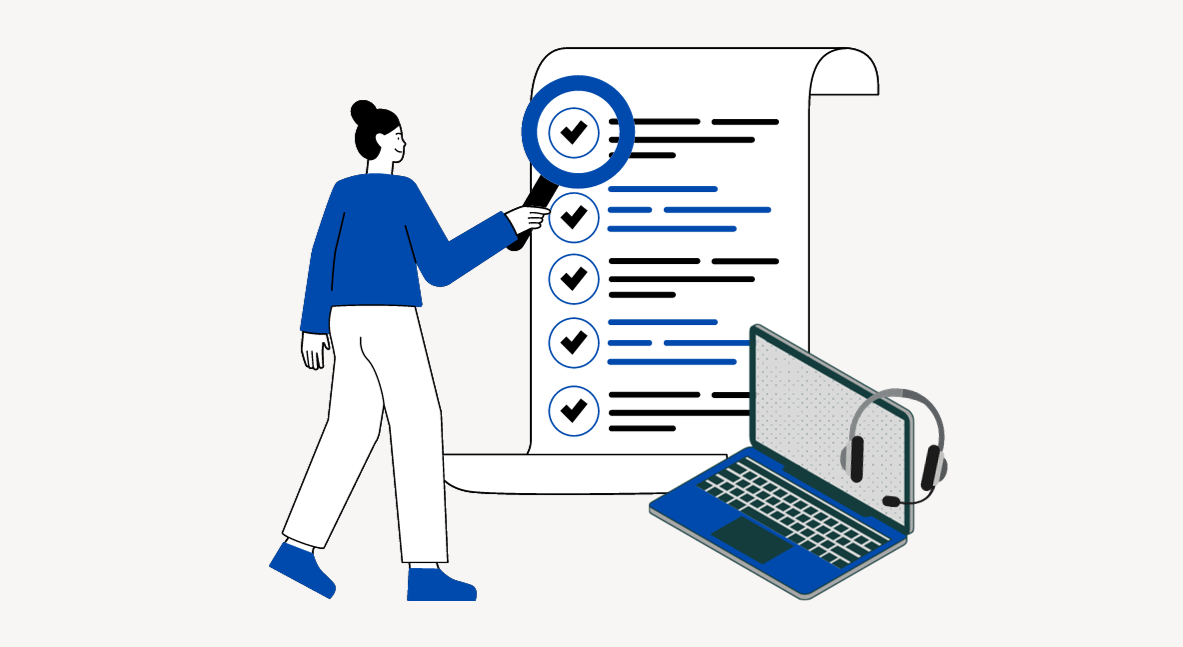A service desk serves as a single point of contact for employees seeking technical support, troubleshooting, or guidance related to software, hardware, network connectivity, and other IT-related matters. It acts as a bridge between the end-users and the IT department, facilitating effective communication and issue resolution. In an IT Service Management (ITSM) framework, the IT Service Desk plays a pivotal role in supporting internal users and maintaining operational efficiency. Addressing common challenges faced by IT Service Desks is crucial to ensure smooth IT operations and user satisfaction, while aligning with key ITIL (Information Technology Infrastructure Library) principles.
Addressing the challenges faced by service desks is of utmost importance to ensure their optimal functioning and maintain high levels of user satisfaction. These challenges can hinder the smooth flow of operations, lead to frustrated employees, and impact overall productivity. By proactively identifying and resolving these challenges, organizations can enhance the effectiveness of their service desks, improve user experiences, and foster a collaborative work environment.
I. Challenge 1: High Volume of Support Requests
The high volume of support requests in Incident Management can strain IT Service Desk resources and lead to longer response times. As organizations grow and expand, so does their workforce, resulting in an increased demand for IT support. This surge in support requests can quickly overwhelm service desk resources and impact their ability to provide timely resolutions.
The impact of a high volume of support requests on service desk resources is significant. It can lead to longer response times, increased backlog of tickets, and a higher likelihood of errors or overlooked requests. Service desk agents may find themselves constantly firefighting and struggling to keep up with the influx of support tickets. This not only creates frustration among employees seeking assistance but also puts a strain on the service desk team, potentially leading to burnout and decreased morale.
To address this challenge, service desks can employ several solutions:
a) Implement self-service options and knowledge bases to empower users: By providing employees with self-service options, such as a comprehensive knowledge base or FAQ section, organizations can empower users to find answers to common technical issues on their own. This reduces the dependency on service desk agents for routine queries, allowing them to focus on more complex and critical support requests. Self-service options can include searchable knowledge bases, instructional videos, and user-friendly documentation.
b) Deploy intelligent automation tools for ticket management and triaging: Intelligent automation tools, such as ticketing systems with automated routing and categorization capabilities, can streamline the ticket management process. These tools can automatically assign tickets to the appropriate service desk agent based on their expertise and workload, ensuring efficient ticket distribution. Automated triaging can help prioritize urgent issues, escalate critical incidents, and ensure that tickets are handled in a timely manner.
c) Utilize predictive analytics and AI to forecast support demand and allocate resources effectively: Predictive analytics can analyze historical data and patterns to forecast support demand accurately. By leveraging this information, service desk managers can proactively allocate resources based on expected spikes in support requests. This allows for better workforce planning, ensuring the availability of sufficient service desk agents to handle the anticipated workload. Predictive analytics can also help identify recurring issues and enable proactive measures to prevent them, reducing the overall support ticket volume.
By implementing these solutions, service desks can effectively manage high volumes of support requests, improve response times, and enhance the overall user experience. Empowering users through self-service options, leveraging automation for ticket management, and utilizing predictive analytics for resource allocation are crucial steps in streamlining service desk operations and ensuring efficient support delivery.
II. Challenge 2: Lack of Clear Communication Channels
Effective communication is crucial for service desks to understand and address employee issues promptly. However, a common challenge faced by service desks is the lack of clear communication channels, often due to the availability of multiple avenues through which employees can reach out for support. This can lead to confusion, inefficiencies, and hindered issue resolution.
The use of various communication channels, such as email, phone calls, internal messaging, and even in-person interactions, can create challenges for service desks. Users may choose different channels based on their preferences or urgency, resulting in fragmented communication. This lack of channel consistency can make it difficult for service desk agents to track and manage support requests effectively. Additionally, inconsistent communication can lead to duplicated efforts, miscommunications, and delayed responses, ultimately impacting the overall user experience.
The consequences of inconsistent communication on issue resolution and user experience are significant. It can result in increased resolution times, frustrated users, and decreased productivity. Without a streamlined communication process, service desk agents may struggle to gather the necessary information, understand the context of the issue, or provide accurate and timely updates to users.
To address this challenge, service desks can implement the following solutions:
a) Implement a centralized ticketing system to streamline communication: A centralized ticketing system acts as a single source of truth for all support requests. It allows users to submit tickets through a unified platform, regardless of the communication channel they choose. Service desk agents can then access and manage these tickets from a centralized dashboard, ensuring consistent and organized communication. This streamlines the entire process, improves visibility, and enables efficient tracking and resolution of issues.
b) Integrate chatbots and virtual assistants to handle initial triage and provide real-time support: Chatbots and virtual assistants can serve as the first point of contact for users, handling initial triage and basic inquiries. These automated systems can provide real-time support, gather essential information, and route tickets to the appropriate service desk agents. By integrating chatbots and virtual assistants, service desks can enhance communication efficiency, improve response times, and alleviate the burden on human agents for routine queries.
By implementing these solutions, service desks can establish clear communication channels, streamline support requests, and enhance the overall employee experience. A centralized ticketing system ensures consistency and visibility, clear guidelines empower users to communicate effectively.
III. Challenge 3: Repetitive, Time-Consuming Tasks
The nature of service desk operations involves handling numerous repetitive tasks. These tasks may include password resets, software installations, account provisioning, and system updates. While necessary, they can become burdensome and hinder the efficiency of service desk operations.
The consequences of repetitive, time-consuming tasks on service desks are notable:
a) Reduced productivity: Service desk agents spend a significant amount of time performing repetitive tasks. This diminishes their capacity to handle more critical and complex issues promptly. As a result, overall productivity may suffer, leading to delays in issue resolution and decreased operational efficiency.
b) Increased agent dissatisfaction: Performing repetitive tasks can lead to monotony and job dissatisfaction among service desk agents. Engaging in repetitive work without variety or opportunities for growth can impact motivation and job satisfaction, potentially leading to decreased employee engagement and retention.
c) Inconsistent service delivery: Repetitive tasks can be prone to errors when performed manually. Agents may inadvertently make mistakes due to fatigue or distractions, resulting in inconsistencies in service delivery. Inaccurate or incomplete execution of repetitive tasks can negatively impact user experience and erode trust in the service desk’s capabilities.
To address the challenge of repetitive, time-consuming tasks, service desks can implement the following solutions:
a) Process automation: Identifying opportunities for process automation can significantly reduce the burden of repetitive tasks. Robotic Process Automation (RPA) and workflow management tools can automate routine activities, such as password resets or software installations. By automating these tasks, service desk agents can focus on more complex and value-added activities.
b) Knowledge base and self-service options: Establishing a comprehensive knowledge base and self-service portal empowers users to troubleshoot common issues independently. By providing step-by-step guides and instructional materials, users can resolve simple problems on their own, reducing the dependency on service desk agents for repetitive tasks.
c) Continuous improvement and optimization: Service desks should regularly review their processes and workflows to identify areas for improvement and optimization. By streamlining and optimizing repetitive tasks, service desks can minimize the time and effort required for their execution. This can involve analyzing data, gathering feedback from agents, and leveraging technology solutions to enhance efficiency.
By implementing these solutions, service desks can alleviate the challenges associated with repetitive, time-consuming tasks. Automation, self-service options, and process optimization enable service desk agents to focus on more critical and complex issues, improving productivity, job satisfaction, and service delivery consistency.
IV. Challenge 4: Skill and Knowledge Gaps
Complex technical issues often require specialized expertise or in-depth knowledge that agents may not possess. This can have a detrimental impact on user satisfaction and resolution times.
When service desk agents lack the necessary skills or knowledge to resolve complex issues, several consequences arise:
a) Increased resolution times: Agents may struggle to diagnose and troubleshoot complex problems, resulting in longer resolution times. This can lead to frustration among users who are experiencing disruptions in their work and need prompt solutions.
b) Reduced user satisfaction: Users expect efficient and effective support from the service desk. When agents lack the expertise to resolve complex issues, users may perceive the support they receive as inadequate, leading to lower satisfaction levels. This can erode trust in the service desk’s capabilities and diminish user confidence in seeking assistance in the future.
To address skill and knowledge gaps, service desks can implement the following solutions:
a) Invest in comprehensive training programs: Organizations should prioritize investing in training programs that enhance both technical and soft skills of service desk agents. Technical training can focus on specific systems, software, or tools commonly used within the organization. Soft skills training can include communication skills, problem-solving techniques, and customer service excellence. By equipping agents with a broad skill set, they can handle a wider range of issues efficiently.
b) Foster a learning culture: Service desks should create a culture of continuous learning and professional development. Encouraging agents to pursue certifications, attend industry conferences, or participate in webinars and workshops keeps them updated with the latest trends and technologies. Offering resources and support for self-study also enables agents to expand their knowledge independently.
c) Establish a mentorship program: Mentorship programs facilitate knowledge transfer and skill development. Experienced agents can mentor new or less experienced colleagues, sharing their expertise, best practices, and lessons learned. This mentorship model helps bridge skill gaps and builds a supportive environment for continuous growth and learning within the service desk team. These initiatives empower service desk agents to handle complex issues with confidence, resulting in improved resolution times, enhanced user satisfaction, and a more proficient and capable service desk overall.
V. Challenge 5: Balancing Automation and Personalized Support
Service desks face the challenge of striking the right balance between automation and personalized support for internal employees. While automation can enhance efficiency, there are potential risks associated with over-reliance on automation or inadequate human interaction.
Automation offers numerous benefits, such as quick response times, standardized processes, and increased scalability. However, solely relying on automation can lead to the following risks:
a) Lack of personalized support: Automated solutions may not always address the unique circumstances or specific needs of individual employees. Without personalized support, employees may feel neglected or frustrated, especially when dealing with complex or sensitive issues.
b) Ineffective handling of complex issues: Certain issues require human intervention due to their complexity or the need for nuanced decision-making. Over-reliance on automation in these cases can result in incorrect or inadequate resolutions, leading to extended downtime and reduced productivity.
c) Decreased employee satisfaction: Employees value personalized attention and support. If service desks heavily rely on automation without adequate human interaction, employees may perceive the support as impersonal, leading to decreased satisfaction and a negative perception of the service desk’s effectiveness.
To address this challenge, service desks can implement the following solutions:
a) Identify areas where automation can enhance efficiency: Service desks should identify tasks and processes that can be effectively automated without compromising the quality of support. This can include tasks like ticket routing, status updates, and basic troubleshooting. Implementing suitable automation tools and workflows in these areas can improve efficiency and response times.
b) Emphasize the importance of human interaction for complex or sensitive support requests: For complex issues or situations that require a personal touch, service desks should ensure that human interaction is prioritized. This can involve routing such requests to skilled agents or implementing escalation procedures to ensure timely and appropriate attention. Human intervention is crucial in understanding unique contexts, providing empathetic support, and making informed decisions.
c) Foster an employee-centric approach: Service desk agents should receive training in effective communication and empathy. A focus on interpersonal skills enables agents to provide personalized support, understand employees’ concerns, and build rapport. By fostering an employee-centric approach, service desks can create a positive and supportive environment that enhances employee satisfaction and engagement.
Leveraging automation in appropriate areas improves efficiency, while emphasizing human interaction ensures effective handling of complex issues and maintains employee satisfaction. Ultimately, a well-balanced approach enables service desks to provide efficient and personalized support, contributing to a positive employee experience within the organization.
Overcoming the Challenges of Service Desks
In conclusion, service desks may face a number of challenges, but there are also a number of solutions available with the right tools and technologies.
By investing in the right solution like HappyFox Service Desk, service desks can improve their ability to:
- Reduce ticket volumes
- Improve employee experience
- Gain visibility into IT operations
- Leverage limited resources more effectively
HappyFox Service Desk stands out as a software solution that meets the criteria discussed in this guide, making it a reliable choice for businesses looking to streamline their service desk management processes. Don’t compromise on your employee support—invest in the right service desk software today.








